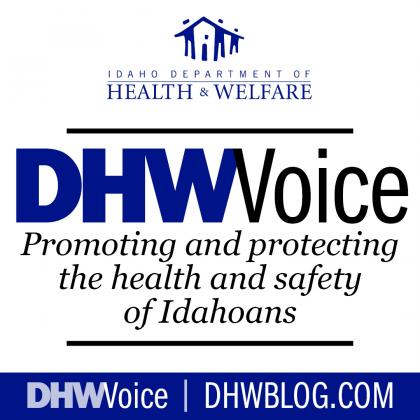From DHW Director Dave Jeppesen: Transforming behavioral healthcare to get Idahoans the care they need, when they need it
For the rest of 2023 I plan to use my weekly blog to reflect upon some of the Department of Health and Welfare’s (DHW’s) accomplishments during my five-year tenure as director.
To be sure, these accomplishments are not my own, but have been planned, deliberated, an
d carried out by many DHW employees—often in collaboration with valuable community partners.
This week, I’m focusing on the incredible work being done to expand and connect Idaho’s behavioral health system.
One of the many hats I’ve worn as director at DHW is that of co-chair of the Idaho Behavioral Health Council, which was established by all three branches of government via proclamation from the Idaho Supreme Court, a concurrent resolution from the Legislature, and by Gov. Brad Little’s July 29, 2020 executive order.
The council is unique because it includes members from all three branches of government: executive, judicial, and legislative. It also includes local government and citizens.
Since its inception, the IBHC’s 13 members have worked with local governments, service providers, community partners, and people who use behavioral health services and their families to identify a list of recommendations to move Idaho closer to making behavioral health care more consistently available to all Idahoans.
This is important because behavioral health issues affect many aspects of life in Idaho, including Idaho’s corrections system, judicial system, hospitals, and communities.
The council’s vision is that adults, children, and their families who live with mental illness and addiction receive the behavioral healthcare services they need, when they need them.
There’s still a lot of work to do to fulfill that vision, but it’s gradually becoming reality. Here are some notable milestones:
- In July of 2022, the Division of Behavioral Health (DBH) at DHW successfully implemented the Idaho 988 Suicide and Crisis Lifeline. Now the Idaho Crisis and Suicide Hotline (ICSH) answers calls and texts placed to 988 in Idaho. From July 2022 to June 2023, the ICSH answered 12,657 calls that were made via 988.
- DBH worked to establish four new youth crisis centers in Idaho Falls, Twin Falls, Boise, and Nampa. Youth often first enter the continuum of care in Idaho after a crisis becomes an emergency. They end up committing a crime or being taken to a hospital. The new Youth Behavioral Health Community Crisis Centers (YBHCCCs) will help ensure youth in crisis receive an appropriate level of crisis treatment, rather than being hospitalized or incarcerated.
- Idaho now has five Certified Community Behavioral Health Clinics (CCBHCs), which are clinics that provide whole-person care under one roof. CCBHCs create access to an array of services, stabilize people in crisis, and provide necessary treatment for people with complex mental illnesses and substance use disorders. They also ensure an approach to healthcare that emphasizes recovery, wellness, trauma-informed care, and the integration of physical and behavioral health. CCBHCs must provide nine core services, either directly or through formal partnerships.
- There is and needs to be a strong focus on recovery in any behavioral health system of care. DBH created the first-ever Recovery Coach Academy (RCA) in Idaho. The RCA provides training and mentoring for recovery coaches who help adults with substance use disorder issues. More than 89 coaches, from all over Idaho, have completed training through the RCA, and 50 more have started the process. Additionally, we have identified sustainable funding for Idaho’s nine Recovery Community Centers.
- The division is also working with partners across the state to open more than 85 new psychiatric residential treatment facility (PRTF) beds in three locations across Idaho. Historically, youth needing PRTF level of care had to go out of state. These Idaho operated facilities will prioritize Idaho youth and will allow us to bring Idaho’s youth home.
These accomplishments are due to hundreds of people who work to make a difference for Idahoans, and I’m proud to have played a role. I’m also confident that the many important employees working behind the scenes at DBH, our partners and stakeholders will continue to do this good work to get Idahoans the mental health care they need, when they need it.
I hope you have a safe and healthy weekend!
The Idaho Department of Health and Welfare is dedicated to strengthening the health, safety, and independence of Idahoans. Learn more at healthandwelfare.idaho.gov.




Join the Discussion
Please note the following terms of participation in commenting on the DHW Voice blog.
To ensure a productive discussion you agree to post only comments directly related to this post and to refrain from posting obscenities; threatening, abusive or discriminatory language; sexually explicit material; and other material that would violate the law if published here; promotional content; or private information such as phone numbers or addresses. DHW reserves the right to screen and remove inappropriate comments.